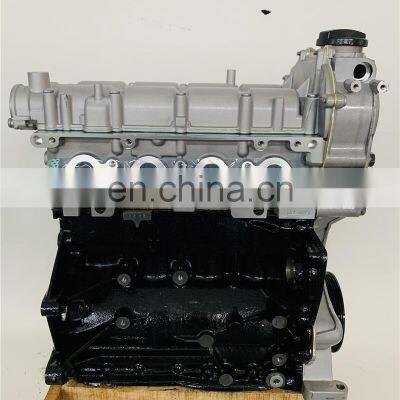Upgrade your machinery with a high-quality clp engine.
The Duty of a Clp Engine in Revolutionizing Engine Efficiency and Sustainability
The advent of CLP engine technology presents an essential moment in the automobile sector, where efficiency and sustainability assemble in unprecedented means. By optimizing combustion procedures and allowing for vibrant modifications in compression ratios, these engines not only guarantee improved fuel effectiveness and minimized discharges but additionally challenge standard design paradigms.
Comprehending CLP Engine Innovation
As the automobile sector consistently looks for cutting-edge solutions to boost efficiency and performance, recognizing CLP engine modern technology comes to be important. The term CLP represents Compression-Low Pressure, a sophisticated engine layout that concentrates on optimizing combustion procedures and minimizing emissions. This technology operates by preserving a low-pressure setting within the combustion chamber, which assists in a much more total gas shed and reduces unburned hydrocarbons.
Among the key functions of CLP engine modern technology is its capability to adjust the compression ratio dynamically. This versatility allows the engine to operate effectively throughout numerous driving problems, improving gas economic climate while all at once enhancing power result. Additionally, CLP engines utilize progressed materials and layout principles to reduce weight and thermal losses, additionally adding to overall performance.
Furthermore, the assimilation of electronic control systems plays a crucial duty in managing the engine's efficiency parameters. These systems make it possible for real-time changes to ignition timing and gas injection, enhancing burning for both power and effectiveness. By comprehending CLP engine modern technology, stakeholders in the auto market can much better appreciate its potential in driving the future of engine design, performance, and sustainability.
Efficiency Enhancements Offered
CLP engine technology supplies substantial performance improvements that set it apart from conventional engine styles. One of the main advantages of CLP engines is their ability to operate successfully across a wider variety of rates and lots. This versatility translates into enhanced torque shipment and velocity, offering a more receptive driving experience.
Furthermore, the innovative combustion procedure made use of in CLP engines optimizes fuel-air blending, resulting in greater thermal efficiency. This improvement not only takes full advantage of power outcome yet additionally minimizes power loss, resulting in an engine that does better under numerous problems.
Moreover, the modular architecture of CLP engines permits easier integration with hybrid systems, intensifying their performance possibility - clp engine. This adaptability enables producers to create automobiles that accommodate customer needs without compromising agility or power
The precision engineering associated with CLP modern technology likewise adds to reduce rubbing and wear, improving engine longevity and minimizing the regularity of upkeep. On the whole, these performance enhancements placement CLP engines as a leading selection in the pursuit of high-performance, reputable, and versatile engine solutions.
Environmental Benefits of CLP Engines
One of one of the most compelling advantages of CLP engines hinges on their ecological advantages, which are progressively important in today's automotive landscape. These engines are designed to optimize gas efficiency, significantly lowering carbon emissions compared to conventional combustion engines. By utilizing innovative burning techniques and cutting-edge products, CLP engines promote cleaner exhaust outcomes, adding to improved air top quality.
Furthermore, the reduction in gas intake not just brings about reduce greenhouse gas discharges yet additionally saves valuable natural sources. As fossil gas reserves diminish, the shift in the direction of CLP innovation represents a tactical relocation towards sustainability. The engines are frequently compatible with different gas, further boosting their clp engine eco-friendly appeal and enabling a diversified energy profile.
Furthermore, the light-weight style of CLP engines assists lower car weight, which subsequently minimizes the power required for propulsion. This leads to lower operational power usage and a decreased environmental footprint. In summary, CLP engines stand at the center of efforts to minimize environment modification and advertise lasting techniques in the auto industry, embodying a future where performance and ecological obligation are not mutually unique.
Comparison With Typical Engines
While traditional engines have long dominated the automobile sector, the introduction of CLP modern technology presents a significant shift in efficiency and performance. Standard inner combustion engines primarily rely upon fuel burning, which not just restricts thermal effectiveness but likewise adds to higher exhausts. On the other hand, CLP engines use advanced thermal administration and an unique burning process, improving gas efficiency and significantly lowering greenhouse gas exhausts.
Moreover, standard engines run on set power contours, which can hinder efficiency in differing driving conditions. CLP engines, however, are created to adapt their performance dynamically, giving optimum power shipment based upon real-time needs. This flexibility leads to enhanced velocity, responsiveness, and total driving experience.
Upkeep also varies substantially; traditional engines often require regular oil modifications and part substitutes due to damage. clp engine. CLP engines, with less relocating components, promise decreased maintenance requirements and longer functional life expectancies

Future Prospects and Innovations
As the automotive landscape progresses, the future of engine technology is increasingly concentrated on innovations that enhance performance and sustainability. The Clp engine, with its distinct design and operational performances, is positioned to play a crucial duty in this change. Future growths might involve innovations in materials scientific research, enabling the building of lighter and extra durable components, therefore lowering general lorry weight and boosting fuel efficiency.
In addition, the combination of expert system and device learning into engine administration systems is expected to maximize performance dynamically, permitting real-time changes based upon driving conditions. These innovations can further reduce discharges and boost energy application.
Furthermore, research study right into alternate gas, consisting of hydrogen and biofuels, offers amazing opportunities for Clp engines, lining up performance with green efforts. clp engine. As governing structures become more stringent, the adoption of such modern technologies will certainly be crucial in achieving sustainability objectives without compromising power
Final Thought
